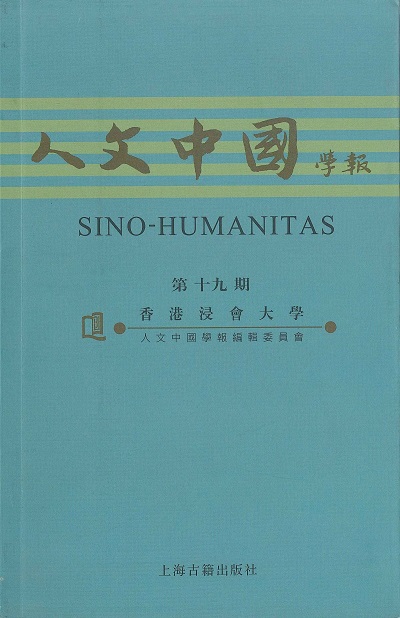論元末顧瑛“三教合一”視域中的玉山雅集
Syncretism of The Three Teachings in Gu Ying’s Yushan Salons Held in Late Yuan Times
DOI:
https://doi.org/10.24112/sinohumanitas.192181Keywords:
顧瑛, 三教合一, 玉山雅集, Gu Ying, syncretism of the Three Teachings, Yushan salonsAbstract
LANGUAGE NOTE | Document text in Chinese; abstract also in English.
元末昆山名士顧瑛是體現“三教合一”觀念的典型人物,他以“儒衣僧帽道人鞋”的形象出現,在主盟玉山雅集期間,匯集了一群儒士、詩僧和道徒,如“儒林四傑”中的柳貫、黄溍等,龍門僧良琦、净名居士倪瓚等,茅山道士張雨、大癡仙黄公望、鐵笛道人楊維楨等,融通文學、書法、繪畫、聲藝於一堂,形成了儒釋道多層面多元化文化交互爲用的奇特局面。本文以《玉山名勝集》、《草堂雅集》等典籍爲依據,勾稽各種史料,考論其三教會同的表現形態,揭示玉山雅集多重意藴的文化内涵。
Gu Ying (1310-1369), a famous literatus from Kunshan (modern Kunshan, Jiangsu province) in the late Yuan Dynasty, was a representative figure of the syncretism of the Three Teachings. When he presided over the Yushan salons, he wore Confucian apparel, a Buddhist hat and Daoist shoes. A group of Confucian scholars, Buddhist monk-poets and Daoist adepts gathered around him. Among them were Liu Guan and Huang Jin, two of the “Four Eminent Confucian Scholars”; the Buddhist monk Liang Qi from Longmen; the lay Buddhist practitioner Ni Zan; the Daoist adept priest Zhang Yu from Mountain Mao; the Transcendent of Stupidity, Huang Gongwang; and the Iron Flute Daoist adept Yang Weizhen. They brought together different fields of literature, calligraphy, painting and drama, and thus made a milieu for multi-layered interdisciplinary cultural exchanges between Confucianism, Buddhism, and Daoism. Based mainly on two books, Scenic Spots of Yushan and Caotang Salons, the present paper explores the features of this syncretism of the Three Teachings and analyzes the multi-layered cultural significance of the Yushan salons.
Downloads
Published
How to Cite
Issue
Section
License
Copyright (c) 2013 人文中國學報

This work is licensed under a Creative Commons Attribution-NonCommercial 4.0 International License.
The CC BY-NC 4.0 license permits use, distribution and reproduction in any medium, provided the original work is properly cited and not used for commercial purposes. Copyright on any article is retained by the author(s) and the publisher(s).




